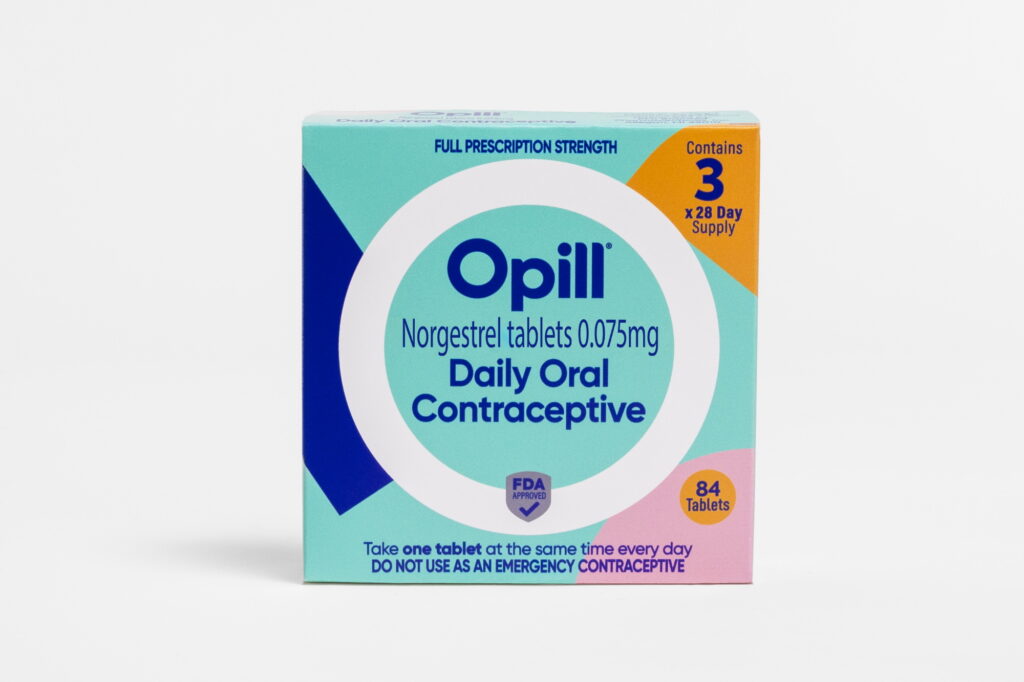Access To Birth Control: The Impact Of OTC Availability Post-Roe

Table of Contents
Increased Access and its Impact on Reproductive Health
Wider access to birth control methods, especially through OTC options, has the potential to dramatically reshape reproductive health outcomes. This increased accessibility translates into tangible benefits for individuals and communities.
Reduced Unintended Pregnancies
Easier access to birth control is strongly correlated with a reduction in unintended pregnancies. Several factors contribute to this:
- Easier access leads to better compliance with birth control regimens. When birth control is readily available, individuals are more likely to use it consistently and correctly, minimizing the risk of pregnancy.
- Lower cost of OTC options removes a significant barrier for many. The financial burden of prescription birth control can be prohibitive for some, limiting their ability to utilize effective methods. OTC options can alleviate this financial strain, making birth control more accessible.
- Improved access to various birth control methods caters to individual preferences and needs. Offering a wider range of choices, from pills and patches to IUDs and implants, ensures that individuals can select the method best suited to their lifestyle, health status, and personal preferences.
Improved Sexual and Reproductive Health Outcomes
Beyond reducing unintended pregnancies, increased access to birth control contributes to better overall sexual and reproductive health.
- Empowered individuals are more likely to engage in safe sex practices. Knowing they have access to reliable contraception encourages individuals to make informed decisions about their sexual health.
- Easier access to contraception allows for better family planning. Individuals can plan pregnancies according to their personal circumstances, leading to healthier pregnancies and improved outcomes for both parents and children.
- Improved access to healthcare services related to contraception. Increased availability of birth control often leads to more frequent contact with healthcare providers, enabling early detection and treatment of other health concerns.
Equity and Access for Marginalized Communities
Addressing healthcare disparities is paramount, and OTC birth control offers a significant opportunity to improve access for underserved populations.
Addressing Healthcare Disparities
The move towards OTC birth control can potentially bridge the healthcare gap for communities often facing significant barriers:
- Removing geographical barriers: Access in rural areas or communities with limited healthcare providers. OTC availability eliminates the need to travel long distances or navigate complex healthcare systems to obtain contraception.
- Financial barriers: Lower cost options increase affordability for low-income individuals. The lower cost of OTC options makes birth control financially feasible for individuals and families who might otherwise struggle to afford it.
- Cultural barriers: Increased accessibility for communities with limited access due to cultural or religious reasons. While not removing all cultural barriers, greater accessibility can improve options for those who might have previously faced significant restrictions based on cultural norms.
The Role of Education and Awareness
Effective implementation of OTC birth control requires a robust strategy that includes comprehensive sexual education and public awareness campaigns.
- Accurate information about different methods and their effectiveness. Clear, accessible information about various birth control methods, including their efficacy, potential side effects, and proper usage, is crucial.
- Addressing misconceptions and misinformation. Combating widespread misinformation about birth control is essential to ensure informed decision-making.
- Promoting responsible use and understanding of potential side effects. Education on responsible use and the importance of seeking medical advice when necessary is vital for safe and effective contraception.
Political and Legal Ramifications of OTC Birth Control
The political and legal landscape surrounding reproductive rights is complex and highly variable, significantly impacting the accessibility of OTC birth control.
State-Level Regulations and Restrictions
State laws regarding reproductive healthcare vary widely, influencing the accessibility and affordability of OTC birth control.
- Analysis of state laws impacting access to contraception. A thorough analysis of existing laws is needed to understand the specific challenges and opportunities within each state.
- Potential legal challenges to OTC availability. The introduction of OTC birth control may face legal challenges from groups opposed to increased access to contraception.
- The role of state-level healthcare providers and their regulations. State-level regulations impacting healthcare providers will play a critical role in the successful implementation of OTC birth control.
The Debate Surrounding Government Regulation
The extent of government regulation of OTC birth control remains a subject of ongoing debate.
- Arguments for and against increased government regulation. Different perspectives exist regarding the appropriate level of government oversight to ensure both access and safety.
- The impact of potential regulations on access and affordability. Government regulations could affect the price and availability of OTC birth control, either positively or negatively.
- Concerns regarding potential misuse or abuse of OTC contraception. Concerns about the potential for misuse or abuse of OTC contraception need to be addressed proactively to ensure responsible use.
Conclusion
The debate surrounding access to birth control has become more critical in the post-Roe era. Increased access, particularly through over-the-counter availability, possesses the potential to significantly enhance reproductive health outcomes and rectify existing healthcare disparities. However, successfully navigating the complexities of state-level regulations and overcoming potential political obstacles is crucial. Understanding these implications is essential to guaranteeing that all individuals have safe, affordable, and accessible options for birth control. Continued discussion and advocacy concerning access to birth control are paramount to securing reproductive freedom for everyone. Let's champion comprehensive access to birth control for all.

Featured Posts
-
 Lotto 6aus49 19 April 2025 Ergebnisse Der Aktuellen Ziehung
May 03, 2025
Lotto 6aus49 19 April 2025 Ergebnisse Der Aktuellen Ziehung
May 03, 2025 -
 The Fallout Justice Departments School Desegregation Order And Anticipated Legal Challenges
May 03, 2025
The Fallout Justice Departments School Desegregation Order And Anticipated Legal Challenges
May 03, 2025 -
 Ow Subsidy Revival Under Consideration In The Netherlands A Boost For Bidders
May 03, 2025
Ow Subsidy Revival Under Consideration In The Netherlands A Boost For Bidders
May 03, 2025 -
 End Of School Desegregation Order Implications And Future Of Educational Equity
May 03, 2025
End Of School Desegregation Order Implications And Future Of Educational Equity
May 03, 2025 -
 Graeme Souness Arsenal Warning Another Champions League Contender Soars
May 03, 2025
Graeme Souness Arsenal Warning Another Champions League Contender Soars
May 03, 2025
Latest Posts
-
 Should Investors Worry About Current Stock Market Valuations Bof As Analysis
May 04, 2025
Should Investors Worry About Current Stock Market Valuations Bof As Analysis
May 04, 2025 -
 Stock Market Valuations Bof As Rationale For Investor Calm
May 04, 2025
Stock Market Valuations Bof As Rationale For Investor Calm
May 04, 2025 -
 Investing In Middle Management A Strategic Approach To Enhanced Company Performance
May 04, 2025
Investing In Middle Management A Strategic Approach To Enhanced Company Performance
May 04, 2025 -
 The Impact Of Website Opt Outs On Googles Search Ai Training
May 04, 2025
The Impact Of Website Opt Outs On Googles Search Ai Training
May 04, 2025 -
 The Power Of Middle Management Driving Results And Fostering Employee Satisfaction
May 04, 2025
The Power Of Middle Management Driving Results And Fostering Employee Satisfaction
May 04, 2025
